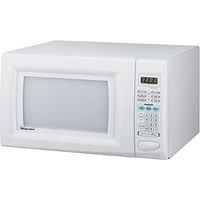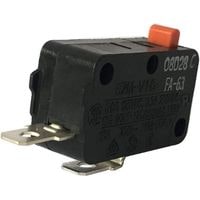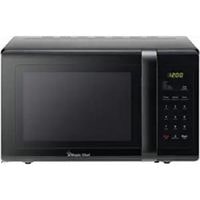My magic chef microwave won’t heat up. If there are no sparks and you can’t hear the magic chef microwave running, check to make sure it has enough power. Check your microwave’s manual to get an idea of how many amps it requires.
If it needs more power than is available in your home or office, you will need a qualified electrician to bypass the fuse panel and add another outlet to your circuit.
My magic chef microwave won’t heat up

Magic Chef Microwave, not heating. If the microwave stops heating food, the magnetron needs replacing.
The diode is a common culprit of this problem because it shorts out when either physical damage occurs or excessive arcing takes place during operation. Inspect the diode to see if it’s burned out and replace it with a new one if needed.
The diode has burned out
Diodes convert the AC output of transformers to DC, doubling the voltage to nearly 5,000 volts. It is this high voltage that heats the food.
During a burnout of the diode, the magnetron will not receive enough voltage to operate, preventing the microwave from heating up.
Remove the bad diode with a screwdriver and replace it with one that is compatible with your microwave oven.
(Warning: The microwave is capable of storing a lethal amount of electricity in its high-voltage capacitor. Be aware that you may suffer electrocution or electric shock if you attempt this repair.)
In case of a burned-out magnetron
Magnetrons are responsible for transmitting and receiving microwaves in the microwave oven, converting high-voltage electricity into microwave energy.
If your magnetron were to stop working, you wouldn’t be able to generate any more microwaves- and your food would stay frozen in its tracks.
Luckily, if a magnetron is electronically defective, one can easily replace it- or so says the manufacturer.
(Warning: The microwave oven can store a lethal amount of electricity in its high voltage capacitor, even after unplugging the device. Make sure to ask an electrician before attempting to change the microwave’s electro-mechanicals.)
Defective Door Switch

Microwaves typically have three or four-door switches. To ensure proper closure of the microwave door, the door switches actuate in sequence as the door closes.
In the event that one of the door switches fails, the microwave won’t start or heat up.
Use a multimeter to test each of the door switches for continuity to determine if any of them are defective.
If any of the door switches does not have continuity, replace it. (Caution: The microwave oven can store thousands of volts of electricity in its high voltage capacitor, even after the microwave oven has been unplugged.
Due to the potential for electric shock, it is extremely dangerous to replace the electronic components in a microwave. Only a licensed technician should replace a door switch.
Faulty Main Control Board
The main control board could be the problem, but more often, the controls are misdiagnosed. Check parts that are more likely to be out of order before replacing them.
If everything is working, replace your mainboard. (Caution! This microwave has stored a lot of electricity in its high-voltage capacitor even when disconnected from the power grid. Only qualified technicians should perform this type of repair.)
Problems with high voltage capacitors
The high-voltage capacitor is used in conjunction with the diode in order to convert the output of the transformer to DC voltage because, when used together, they can double the output voltage.
The microwave oven heats food by producing a combination of microwaves, which are electromagnetic waves, and typical thermal heating.
To determine if it is defective, use a VOM meter that has multi-meter capability along with a capacitance testing ability.
The Thermo protector is not continuous
In order to protect you from the potentially dangerous effects of a microwave, there are various safety features in place.
One example is a Thermo protector. A component that can detect when the inside of the microwave gets too hot and automatically disconnects power from the heating element.
If your oven has stopped heating but still seems to get hot, you should test the functionality of this component because if it’s not working properly, it could be preventing power from getting to your microwave.
To check whether your Thermo protector works, put an analog multimeter across its leads. You should see continuity which indicates that there’s no break in its connections or damage, which affects its ability to do what it’s supposed to do.
In case you find that there’s no continuity (which is to say, you don’t see any sign of connection on your multimeter), remove the old component and replace it with a new one.
The thermal fuse has blown
The thermal fuse is designed to cut off the power to the microwave if there is a serious problem. To determine if the thermal fuse is blown, use a multimeter to test it for continuity.
If the fuse doesn’t have continuity, it must be replaced. The thermal fuse cannot be reset if it has blown, it must be replaced instead.
(Warning: The microwave has a high voltage capacitor in its built-in power supply even after you’ve unplugged it. There is still electricity stored in the capacitor that can seriously hurt you or shock your system.
Never try to replace any electrical elements in your microwave. Only a licensed technician should perform this type of repair.)
A high voltage transformer has failed
Microwave ovens, like many other ovens functioning as heating devices, use high voltage in order to power the magnetron antenna. The magnetron antenna emits the energy that cooks the food.
Unfortunately, microwave ovens are prone to electrical failures. The relay will arc and emit a burning smell.
It is extremely dangerous to attempt replacement of the high voltage transformer due to its stored energy capable of causing electric shock. Only properly trained technicians should replace it.
Related Guide
